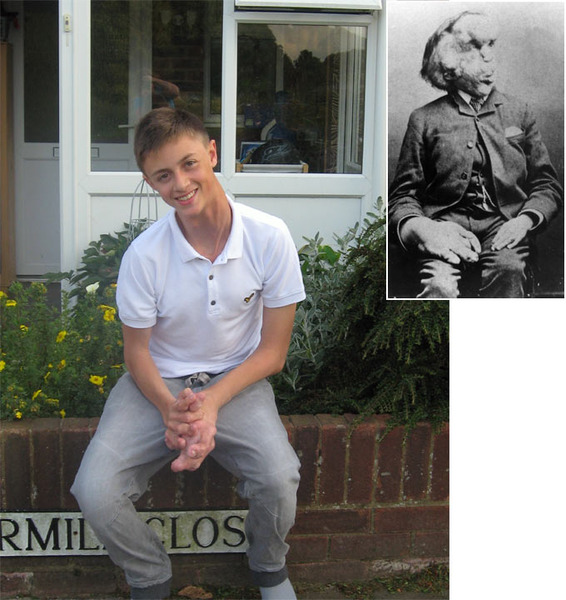
Using new DNA sequencing techniques, researchers have tracked down the gene defect underlying a rare disease called Proteus syndrome that causes bone and skin tissue to grow to sometimes grotesque proportions. The mutation may explain the affliction of the Elephant Man, a deformed Englishman whose tragic life in the late 1800s has been portrayed on stage and film.
Proteus syndrome, named for the shape-shifting Greek sea god, is thought to affect only a few hundred people. Skin and other tissues grow abnormally, leading to enlarged feet, hands, and tumors that can cause pain and other problems and sometimes require amputation. Because the disease doesn't run in families, and only some parts of the body are affected, German dermatologist Rudolf Happle hypothesized in 1987 that instead of resulting from an inherited mutation that permeates all the cells of a new embryo, it might be caused by a spontaneous mutation that appears in one cell early in development. The resulting person would then be a mix of normal cells and ones with the mutation. (Happle speculates the mutation would be fatal to an embryo if it affected all cells.)
But confirming that "mosaic" hypothesis hasn't been easy because geneticists could not follow their typical strategy of tracking the gene by studying families in which some members inherit the disease and others don't, says Leslie Biesecker, chief of the National Human Genome Research Institute's Genetic Diseases Research Branch in Bethesda, Maryland, who has studied Proteus patients for 16 years.
So recently, Biesecker's team turned to a strategy in which researchers use next-generation DNA sequencing to inexpensively decode all the genome's protein-coding DNA, known as the "exome." They sequenced the exomes of abnormal and normal tissues from seven Proteus patients' bodies and compared them with healthy people's exomes to ferret out the culprit gene.
All the Proteus patients shared the same single-base mutation in a gene called AKT1. The same glitch appeared in 26 of 29 patients diagnosed with Proteus disease and in 1% to about 50% of the DNA in positive cell samples, the researchers report online today in The New England Journal of Medicine (NEJM). To bolster the case that the mutation was causing disease, the scientists also showed that the AKT protein is overactive in the abnormal cells. The AKT1 gene, which is part of a cell-growth pathway, has also been found to be mutated in some cancers.
Although exome sequencing has been used to find the genes for dozens of rare diseases in the past 2 years, this is the first "mosaic" disease to be cracked with the technique, says medical geneticist Dian Donnai of the University of Manchester, U.K. The work should serve as a model for studying other mosaic genetic diseases, she says. "It's of fundamental biological importance," agrees University of Utah, Salt Lake City, medical geneticist John Opitz, who co-authored an accompanying commentary in NEJM.
The discovery should also help doctors diagnose suspected Proteus cases and perhaps lead to treatments. Companies are already developing cancer drugs that target the AKT pathway, and one that blocks patients' mutated form of AKT might stop or slow the disease's progression, Biesecker suggests. Patients' families are "realistic" about how long clinical trials take, but "we can't help being excited," says Tracey Whitewood-Neal, head of the Proteus Syndrome Foundation UK in East Sussex, whose 16-year-old son, Jordan, participated in the study.
Biesecker's team also hopes to resolve a scientific debate about what ailed the Elephant Man, whose name was Joseph Merrick. After working as a traveling exhibit in Europe, Merrick was befriended by a surgeon who arranged for him to live at a hospital in London, where Merrick died in 1890 at age 27; his life later became the subject of a play and 1980 film. The hospital, now called Royal London Hospital, still has Merrick's preserved skeleton and has sent a sample to Biesecker's lab. That DNA was too fragmented for exome sequencing, but Biesecker says he plans to try again with a new sample. "The skeleton has been through a lot."



Reader Comments
to our Newsletter